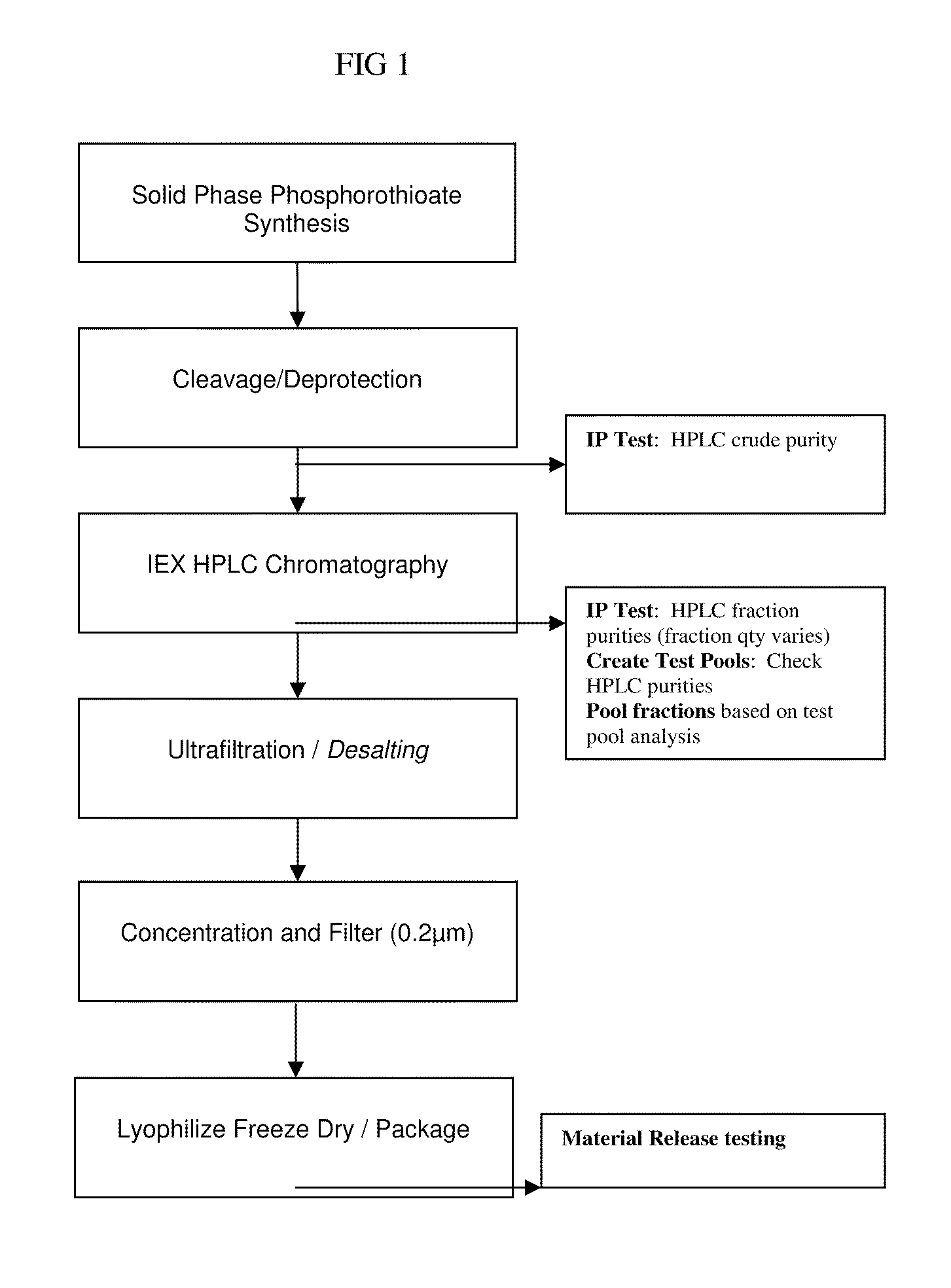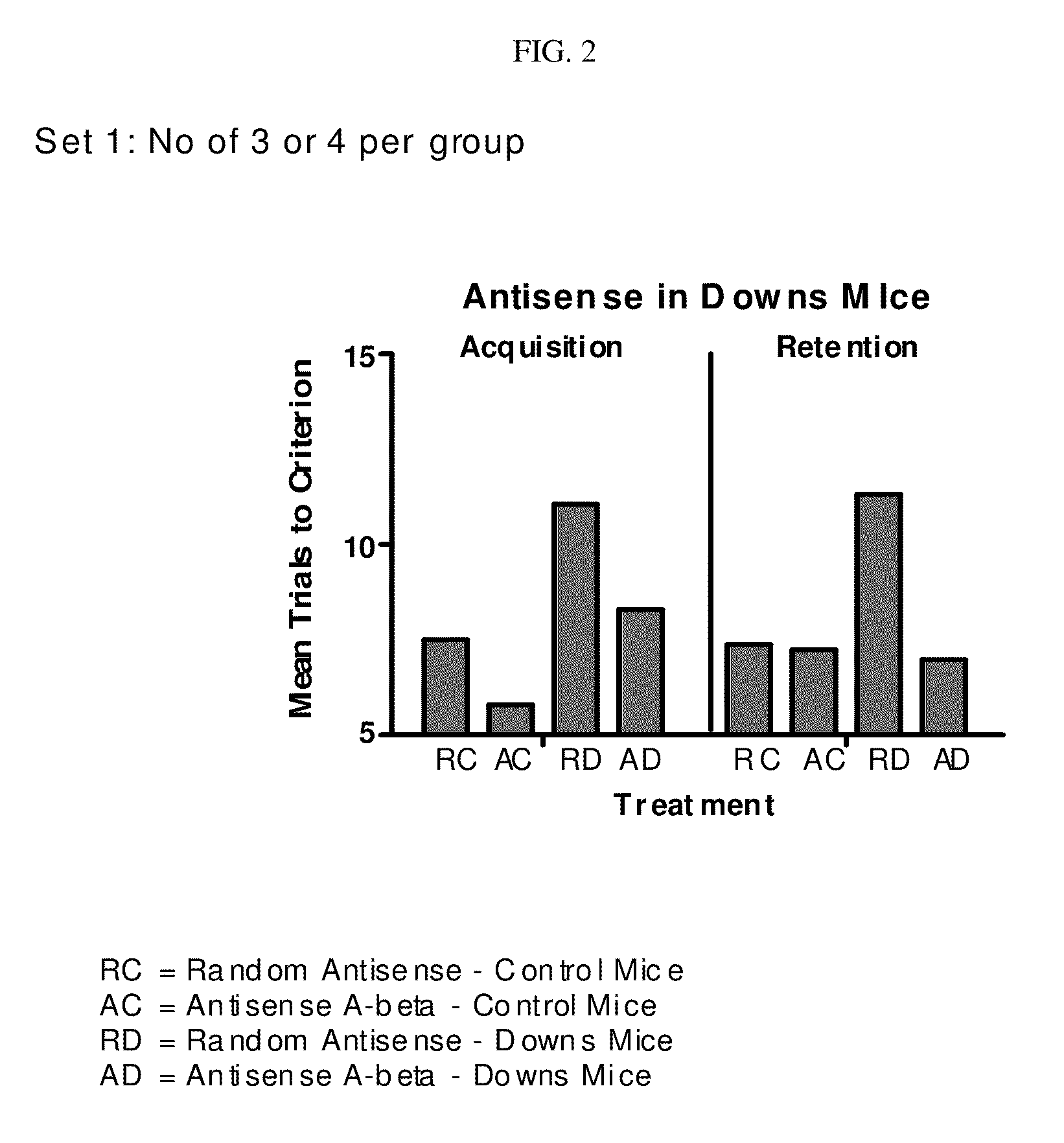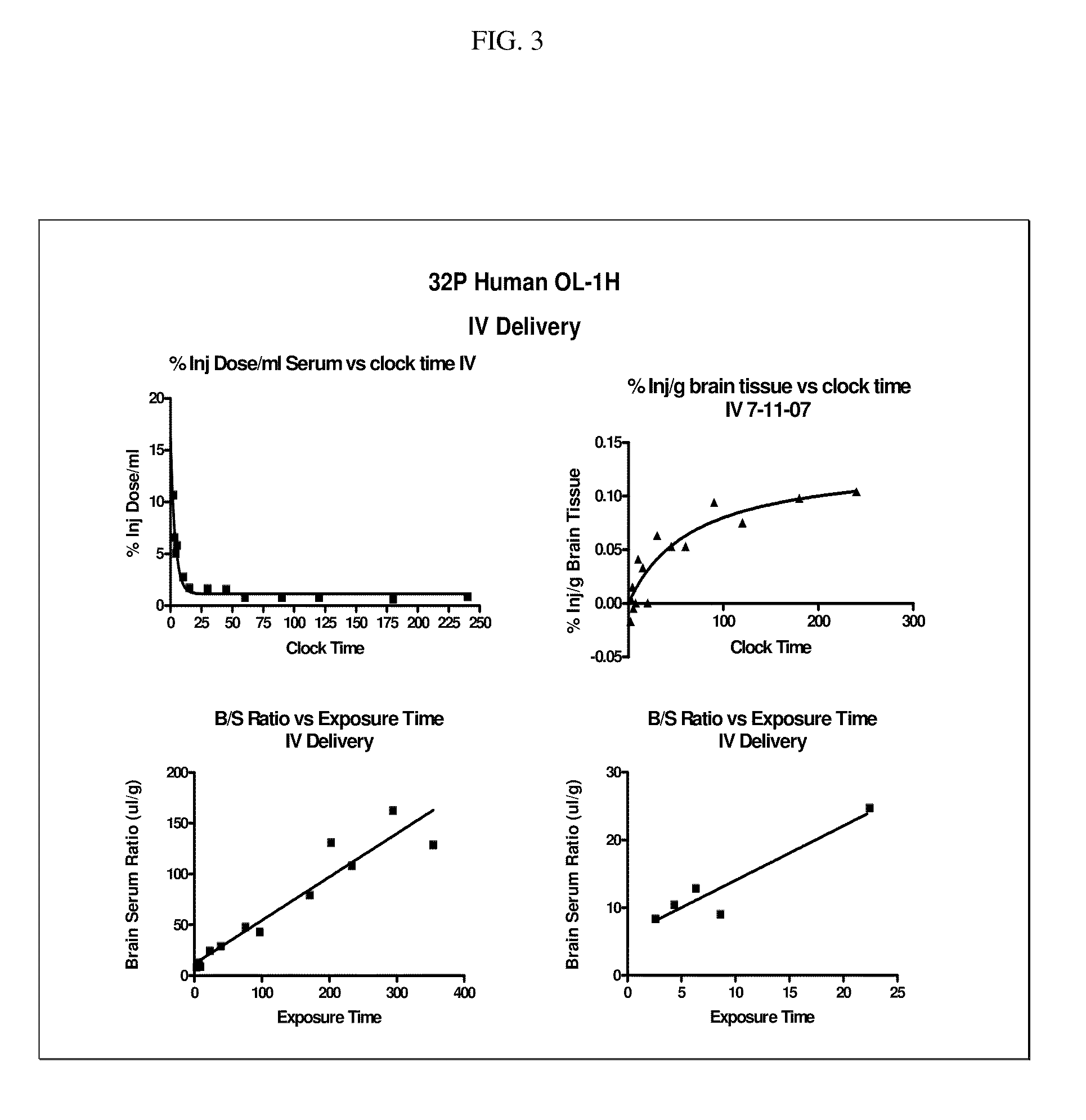Antisense Modulation Of Amyloid Beta Protein Expression
an amyloid beta protein and antisense technology, applied in the field of antisense modulation of amyloid beta protein expression, can solve the problems that direct techniques are not completely or consistently able to effect global penetration of drugs into the brain, and achieve the effect of preventing further damage to brain cells
- Summary
- Abstract
- Description
- Claims
- Application Information
AI Technical Summary
Benefits of technology
Problems solved by technology
Method used
Image
Examples
example 1
Synthesis and Purification of Oligonucleotides
[0142]Oligonucleotides may be made by methods well known in the art. Additionally, they may be synthesized and purified as shown in the flow diagram of FIG. 1, a method by which OL-1 was made. Such a procedure should yield a substance with the following characteristics:[0143]Appearance—white powder, visually free from contaminants;[0144]Purity as identified via HPLC=97%; and pH 1% w / v solution=7.8.
example 2
Murine model of Down's Syndrome
[0145]This example illustrates the efficacy of antisense oligonucleotides according to the present invention to improve acquisition and retention in the segmental trisomic 16 (Ts65Dn) mice. Ts65Dn mice have been engineered with a triplicated portion of mouse chromosome 16, which is syntenic to the distal end of human chromosome 21. This strain can be a murine model for human Down's Syndrome, a genetic disorder characterized by the triplication of at least a portion of chromosome 21, and learning and memory deficits, similar to those observed in Alzheimer's disease. Ts65Dn mice display phenotypic abnormalities which resemble those seen in Down's Syndrome, and have been shown to have short- and long-term spatial memory defects. (Demas et al., Behav. Brain Res., 1996, 82, 85-92). See FIG. 2.
[0146]Several similarities between Alzheimer's disease and some physiological manifestations of aging in Ts65Dn mice have been reported (Salehi et al, Neuron, 2006, 51...
example 3
Determination of Serum Vs. Brain Concentration of OL-1h
[0149]Radiolabeled OL-1 h was delivered intravenously (IV) to mice and concentration in brain versus serum measured in minutes. In FIG. 3 below, the first panel shows that when radioactively labeled OL-1 was injected into the mouse IV, then the OL-1 within an hour had cleared from the blood circulation to reach a lower concentration in blood. The second upper right panel demonstrates that OL-1 has entered the brain with a time course that reaches a plateau between 100 and 300 minutes post injection. The lower 2 panels illustrate that OL-1 in the brain steadily increases compared to the amount in the blood, shown on 2 different timescales. These graphs present the data in the upper panels again but as a ratio of B or brain / S or serum.
PUM
| Property | Measurement | Unit |
|---|---|---|
| Fraction | aaaaa | aaaaa |
| Fraction | aaaaa | aaaaa |
| Fraction | aaaaa | aaaaa |
Abstract
Description
Claims
Application Information
 Login to View More
Login to View More - R&D
- Intellectual Property
- Life Sciences
- Materials
- Tech Scout
- Unparalleled Data Quality
- Higher Quality Content
- 60% Fewer Hallucinations
Browse by: Latest US Patents, China's latest patents, Technical Efficacy Thesaurus, Application Domain, Technology Topic, Popular Technical Reports.
© 2025 PatSnap. All rights reserved.Legal|Privacy policy|Modern Slavery Act Transparency Statement|Sitemap|About US| Contact US: help@patsnap.com



